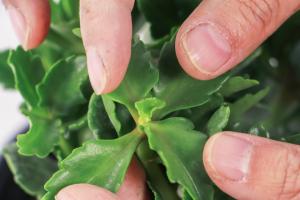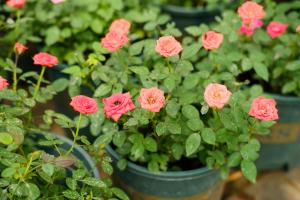Introduction
When planting fruit trees, one of the critical considerations is to ensure they are properly pollinated. Pollination is the process of transferring pollen from the male reproductive organs to the female reproductive organs of flowers, which is crucial in fruit production. In this article, we will discuss how far to plant fruit trees for pollination and why it is essential.
The Importance of Pollination
Pollination is essential for fruit trees and crops because it ensures the production of fruit. When the pollen from the male reproductive organs of a flower is transferred to the female reproductive organs of another flower, fertilization occurs, and a fruit is produced. However, if the flowers are not adequately pollinated, the fruit may be misshapen or not develop at all.
The Factors Affecting Pollination
There are various factors that can affect pollination in fruit trees, including the type of tree, the distance between trees, and the presence of pollinators. For example, some fruit trees are self-fertile, meaning they can pollinate themselves, while others require cross-pollination from another tree.
The distance between trees is also essential, as cross-pollination can only occur if the pollen from one tree has the opportunity to reach the female reproductive organs of another tree. Generally, the smaller the tree, the closer it can be planted to another tree, while larger trees should be planted further apart.
Pollinators, such as bees and butterflies, are vital for pollination. Therefore, it is essential to ensure that the environment around the fruit trees is conducive to attracting pollinators. This could include planting wildflowers or ensuring that pesticides harmful to pollinators are not used in the area.
How Far to Plant Fruit Trees for Pollination
The distance you should plant fruit trees for pollination depends on the type of tree and the size of the trees. Generally, for smaller fruit trees such as apple trees, a planting distance of between 6 to 8 feet is recommended. This allows for cross-pollination to occur between the trees while also allowing room for the trees to grow.
For larger fruit trees such as cherry trees or plum trees, a planting distance of between 18 to 20 feet is recommended. This spacing allows for the trees to grow while still being close enough to each other for cross-pollination to occur.
Conclusion
In conclusion, pollination is a critical factor in fruit tree production, and it is essential to ensure that the fruit trees are adequately spaced for cross-pollination to occur. The distance between trees varies depending on the size and type of fruit tree, but generally, planting distances between 6 to 8 feet for smaller trees and 18 to 20 feet for larger trees are recommended. By following these guidelines, you can increase the chances of abundant fruit production in your fruit trees.

 how many times do yo...
how many times do yo... how many planted tre...
how many planted tre... how many pine trees ...
how many pine trees ... how many pecan trees...
how many pecan trees... how many plants comp...
how many plants comp... how many plants can ...
how many plants can ... how many plants and ...
how many plants and ... how many pepper plan...
how many pepper plan...


































